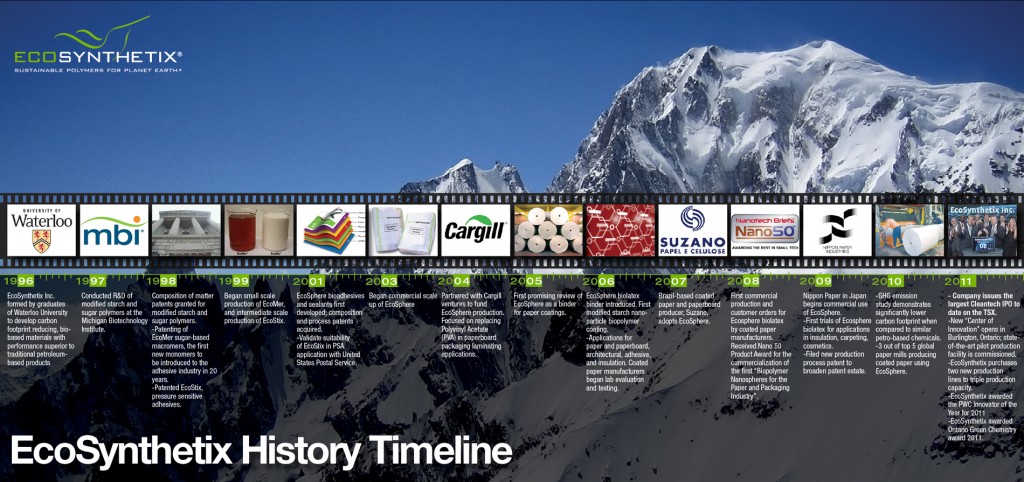It’s good to see a project that might result in applications for CNC (aka, NCC). I commented briefly about the CNC situation earlier today in my Nov. 25, 2013 posting about Lomiko Metals (based in Surrey, BC, Canada) and its focus on developing markets for its product (graphite flakes/graphene). By contrast, Canada’s CelluForce plant (in Québec) has stopped production to avoid adding to its stockpile (as per my Oct. 3, 2013 posting), Alberta has launched a pilot CNC plant (my Nov. 19, 2013 posting), Blue Goose Biorefineries in Saskatchewan was ramping up production according to my May 7, 2013 posting and someone, in a blog posting comment, claimed that Pure Liganin in BC produces CNC (which I cannot confirm since the company mentions neither CNC nor NCC).,
Back to happier matters, a research team from Polytechnic Institute of New York University (NYU-Poly) has discovered information that could be helpful for scientists working with protein polymers (from the Nov. 22, 2013 news item on Azonano,,
A team of researchers has uncovered critical information that could help scientists understand how protein polymers interact with other self-assembling biopolymers. The research helps explain naturally occurring nano-material within cells and could one day lead to engineered bio-composites for drug delivery, artificial tissue, bio-sensing, or cancer diagnosis.
The Nov. 21, 2013 NYU-Poly press release, which originated the news item, goes on to explain the CNC connection to this work,
Bionanocomposites provide a singular area of research that incorporates biology, chemistry, materials science, engineering, and nanotechnology. Medical researchers believe they hold particular promise because—unlike the materials that build today’s medical implants, for example—they are biodegradable and biocompatible, not subject to rejection by the body’s immune defenses. As biocomposites rarely exist isolated from other substances in nature, scientists do not yet understand how they interact with other materials such as lipids, nucleic acids, or other organic materials and on a molecular level. This study, which explored the ways in which protein polymers interact with another biopolymer, cellulose, provides the key to better understanding how biocomposite materials would interact with the human body for medical applications.
The materials analyzed were composed of bioengineered protein polymers and cellulose nanocrystals and hold promise for medical applications including non-toxic, targeted drug delivery systems. [emphasis mine] Such bionanocomposites could also be used as scaffolding for tissue growth, synthetic biomaterials, or an environmentally friendly replacement for petroleum-derived polymers currently in use.
I wonder if the researchers obtained their CNC from the production plant in Wisconsin (US), assuming it has opened since my July 27, 2012 posting featuring an announcement of future plans. Getting back to this latest work, here’s a link to and a citation for the paper,
Bionanocomposites: Differential Effects of Cellulose Nanocrystals on Protein Diblock Copolymers by Jennifer S. Haghpanah, Raymond Tu, Sandra Da Silva, Deng Yan, Silvana Mueller, Christoph Weder, E. Johan Foster, Iulia Sacui, Jeffery W. Gilman, and Jin Kim Montclare. Biomacromolecules, Article ASAP DOI: 10.1021/bm401304w Publication Date (Web): October 18, 2013
Copyright © 2013 American Chemical Society
This paper is behind a paywall.
Offhand I can think of only one Canadian laboratory (although I’m certain there are others), which is working on applications for CNC and that’s Mark MacLaclan’s lab at the University of British Columbia (UBC). For example, there is this ‘in press’ paper,
Shopsowitz, K.E.; Kelly, J.A.; Hamad, W.Y.; MacLachlan, M.J. “Biopolymer Templated Glass with a Twist: Controlling the Chirality, Porosity, and Photonic Properties of Silica with Cellulose Nanocrystals” Adv. Funct. Mater. 2013, in press. DOI: 10.1002/adfm.201301737
You can find more about MacLachlan’s work here.
